Turkey - for the Turks
Exactly 95 years ago, September 9 1922, the Turkish troops entered Smyrna (now Izmir) - the last major city held by the Greeks in Asia Minor. This meant the end of the Greek-Turkish war of 1919-22, in which Greece suffered a crushing defeat.
In Smyrna for many centuries the Christian population prevailed. By the beginning of the twentieth century, more than half of the 200’s thousands of inhabitants of the city were Greeks, another approximately 15% were Armenians, so the Turks called it “gyaur-Izmir” - “wicked Izmir”. It is not surprising that when the Greek government in 1919 tried to annex the Greek territory inhabited by the Greeks on the eastern shore of the Mediterranean Sea, Smyrna became the capital of these lands.
But 26 August 1922, the Greek army was defeated in the battle of Karakhisar, after which the Turks drove it without stopping all the way to the coast. Along with her, hundreds of thousands of Christians who flooded Smyrna fled from the pogroms. In early September, more than half a million people had accumulated there, which the Greek military could no longer protect.
In the vain hope of avoiding the mass death of the civilian population, the Greeks surrendered the city without a fight under the guarantee of safety and free departure for all its inhabitants. The Turkish commander-in-chief, Mustafa Kemal, officially gave such a guarantee, stating that any of his soldiers who had inflicted at least some harm to a civilian would be shot. However, these were just empty words.
On the same day, a monstrous massacre and mass arson of Christian houses, churches, schools, libraries, commercial and administrative buildings began in Smyrna. Greeks and Armenians were killed without exception, and this was often accompanied by savage atrocities. The local Bishop Chrysostom was pulled out of his beard, gouged out his eyes, cut off his nose, ears, and only then was shot, and his assistant was tied by the legs to the car and dragged along cobblestones until he died. People were smashed with daggers, women had their breasts cut off, men had their genitals cut.
Escaping from the slaughter, crowds of citizens and refugees rushed into the port, where English, French and Italian warships stood in the roadstead, hoping for their protection. But the recent allies of Greece only watched indifferently, referring to their neutrality in the Greek-Turkish conflict. Several Greek ships in the same place could accommodate only an insignificant part of the people who were looking for salvation.
The Turks, nevertheless, did not dare to continue the slaughter in front of foreign sailors. Instead, they blocked the port, stopping the supply of food and fresh water. The reason for this they announced that in the port, in addition to women, old people and children, there were men of military age, from whom the Turks demanded total surrender.
Soon the embankments of Smyrna turned into hell. People died of thirst, many killed their children, unable to look at their torment, and then finished with them. Others gave up, the Turks gathered them in groups, took them out of the city and no one else saw them. Meanwhile, in the port tens of thousands of still living people sat and lay among the decaying corpses.
Only September 23 began a truly massive evacuation. The Greeks drove to the shore all the available watercraft and continuously removed those who could still be saved. The rescue operation was voluntarily attended by American, Japanese and Scandinavian merchant ships located off the Anatolian coast. Some even threw their goods into the sea to take on more refugees. However, death mowed people faster than they had time to save.
By September 30 it was all over, there were no living Christians left in Smyrna and its surroundings. About 400 thousands of people managed to evacuate, and 183 thousands of Greeks, 12 thousands of Armenians and several thousand Assyrians died at the hands of murderers, in a fire of fires, or died of thirst. Mustafa Kemal stated with satisfaction: "I see a great sign that Turkey has cleared itself of foreigners and traitors. From now on Turkey belongs to the Turks!"
At the same time, he instructed his foreign minister to make a statement that there had been no pogroms and murders, all the talk about them was vile slander, and the Christians themselves allegedly set fire to Smyrna. This point of view, the Turkish authorities officially adhere to now, indignantly denying any accusations.
On the screen saver - the red-banner Turkish army led by Mustafa Kemal (the future Atatürk), under the joyful dances of the locals, enters Smyrna. Turkish historical propaganda picture.
Anatolian Greeks fleeing the Turks arrive in Smyrna in late August - early September 1922.
English battleship "King George V" at the breakwater of the Port of Smyrna. Behind him is the burning city. Next are photos taken in the port and on the embankments of Smyrna, waiting and during evacuation.
Overloaded people boat overturned at the pier.
Refugees who arrived from Smyrna on one of the Greek islands of the Aegean Sea, and those who failed to escape from the city.
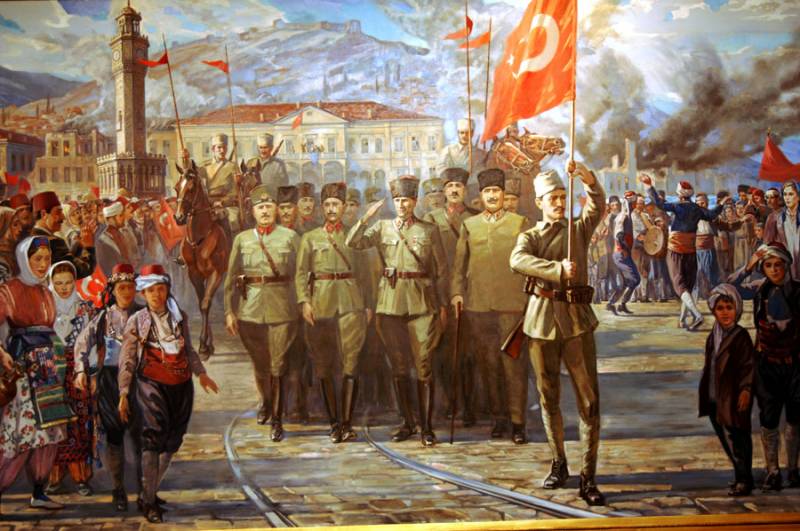
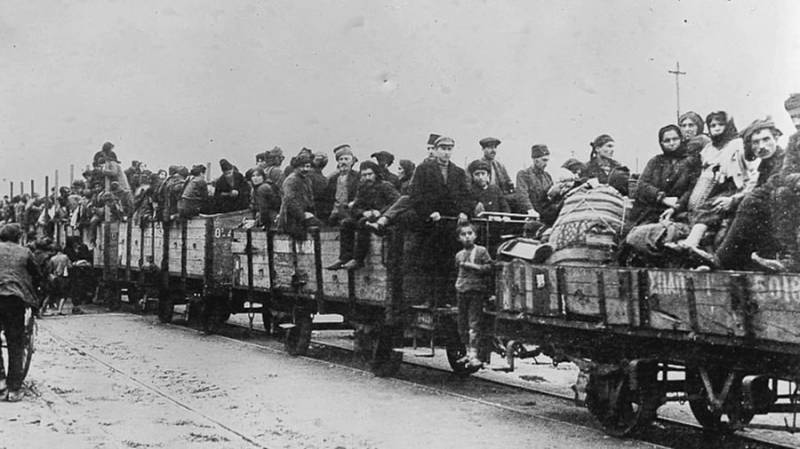
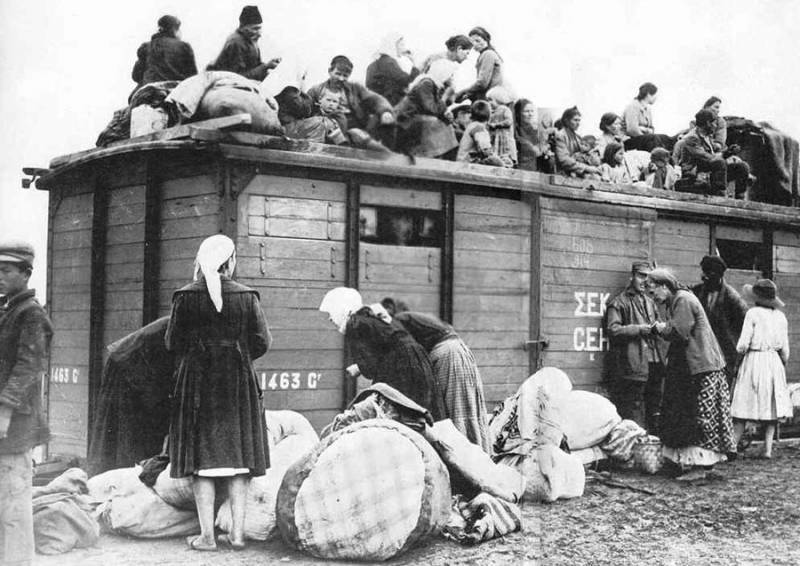
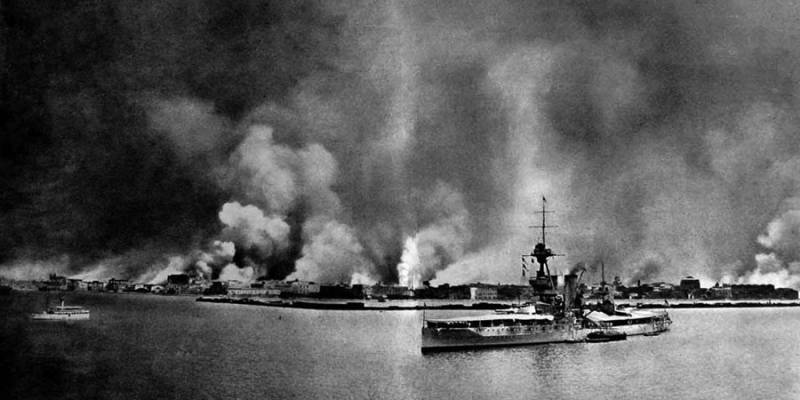
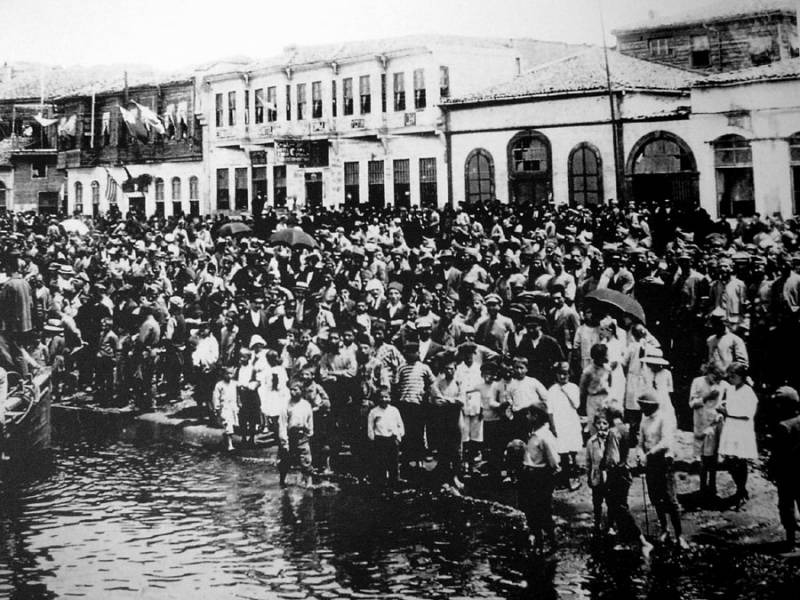
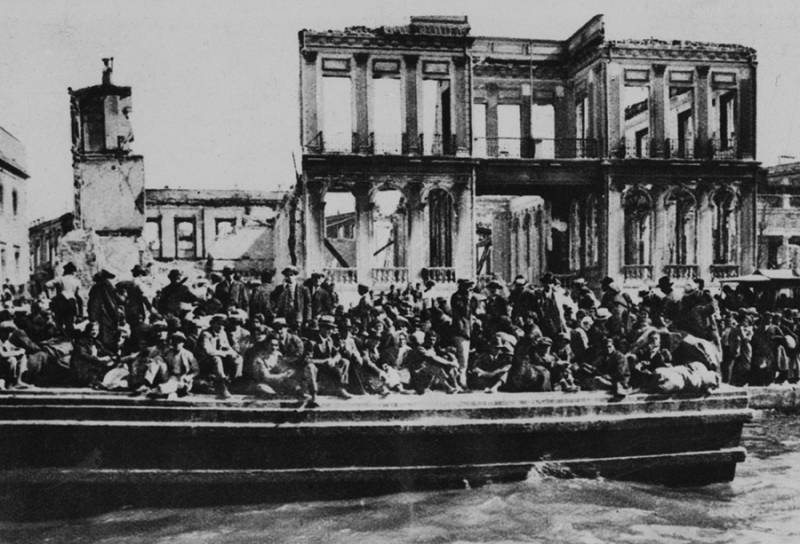
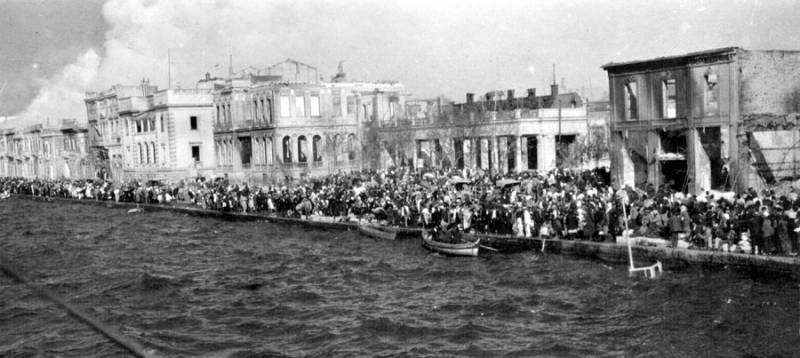
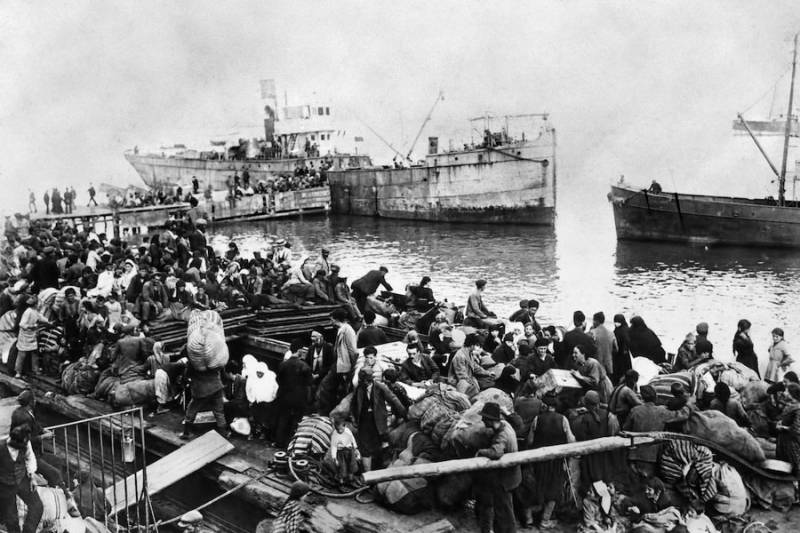
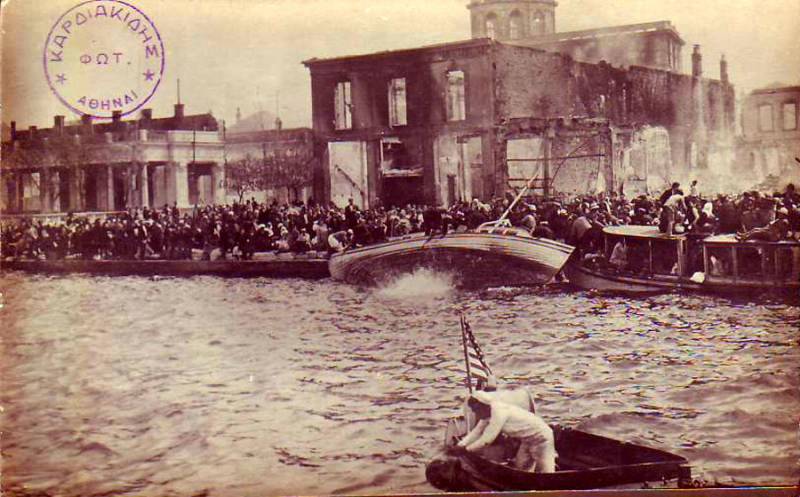
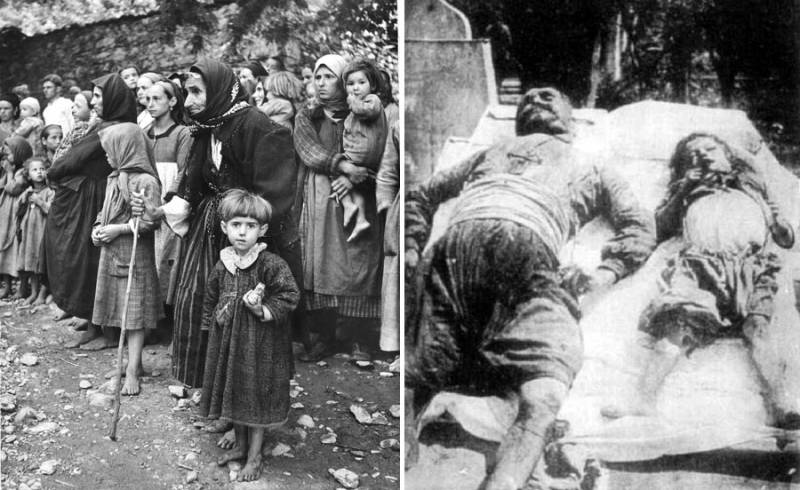
Information